Showing Spotlights 169 - 176 of 547 in category All (newest first):
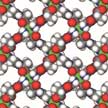 With their special structure and large surface area, MOFs open up new opportunities in drug delivery. The ability to exchange the metal centers and organic linkers even provide an extensive library of MOF materials. As a result, the integration of small guest molecules within the MOF pores, such as small molecule drugs and biomolecules, have shown promise for delivery applications to treat diseases. A recent review article discusses current proceedings on integrating diverse biomolecules within MOFs.
With their special structure and large surface area, MOFs open up new opportunities in drug delivery. The ability to exchange the metal centers and organic linkers even provide an extensive library of MOF materials. As a result, the integration of small guest molecules within the MOF pores, such as small molecule drugs and biomolecules, have shown promise for delivery applications to treat diseases. A recent review article discusses current proceedings on integrating diverse biomolecules within MOFs.
Jul 4th, 2017
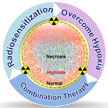 A look at the emerging roles of nanotechnology in the rapidly evolving domain of modern/future radiation therapy. In an effort to devise novel and more effective anticancer regimes, a rapidly growing community of researchers is applying the unique properties of nanomaterials to combat the unmet challenges posed by classical radiation therapy - which has become one of the most effective and frequently applied cancer therapies. However, despite a plethora of preclinical studies, nanoparticle mediated combination RT/phototherapy has not yet been translated in the clinic.
A look at the emerging roles of nanotechnology in the rapidly evolving domain of modern/future radiation therapy. In an effort to devise novel and more effective anticancer regimes, a rapidly growing community of researchers is applying the unique properties of nanomaterials to combat the unmet challenges posed by classical radiation therapy - which has become one of the most effective and frequently applied cancer therapies. However, despite a plethora of preclinical studies, nanoparticle mediated combination RT/phototherapy has not yet been translated in the clinic.
Jun 22nd, 2017
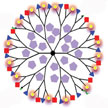 Dendrimers have emerged as a powerful class of nanomaterials in nanomedicine due to their unique structural features: globular, well-defined, highly branched and controllable nanostructures where the presence of several terminal groups can be functionalized with different ligands simulating the multivalency present in different biological systems. A recent review article identifies the currently existing dendritic systems and discusses their strengths and caveats in the context of attaining efficient therapeutic strategies for the treatment of neurological disorders.
Dendrimers have emerged as a powerful class of nanomaterials in nanomedicine due to their unique structural features: globular, well-defined, highly branched and controllable nanostructures where the presence of several terminal groups can be functionalized with different ligands simulating the multivalency present in different biological systems. A recent review article identifies the currently existing dendritic systems and discusses their strengths and caveats in the context of attaining efficient therapeutic strategies for the treatment of neurological disorders.
Jun 21st, 2017
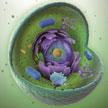 Nanotechnology is becoming a crucial driving force behind innovation in medicine and healthcare, with a range of advances including nanoscale therapeutics, biosensors, implantable devices, drug delivery systems, and imaging technologies. This article provides a comprehensive overview of healthcare advances that may be possible through nanotechnology, ranging from fitness monitoring, prevention, diagnosis to therapy, and everything in between.
Nanotechnology is becoming a crucial driving force behind innovation in medicine and healthcare, with a range of advances including nanoscale therapeutics, biosensors, implantable devices, drug delivery systems, and imaging technologies. This article provides a comprehensive overview of healthcare advances that may be possible through nanotechnology, ranging from fitness monitoring, prevention, diagnosis to therapy, and everything in between.
Jun 13th, 2017
 Inspired by octopus arms, researchers demonstrate an uncomplicated and scalable templating technology for fabricating nanosuckers on PDMS substrates, using a scalable spin-coating technology. As the nanosuckers are pressed against a substrate, the flexible nanosuckers confirm to the substrate and deform by releasing the internal air between nanosuckers and the substrate, forming a seal and generating an adhesion force. The nanosucker adhesion is maintained over multiple contact cycles on both wet and dry surfaces.
Inspired by octopus arms, researchers demonstrate an uncomplicated and scalable templating technology for fabricating nanosuckers on PDMS substrates, using a scalable spin-coating technology. As the nanosuckers are pressed against a substrate, the flexible nanosuckers confirm to the substrate and deform by releasing the internal air between nanosuckers and the substrate, forming a seal and generating an adhesion force. The nanosucker adhesion is maintained over multiple contact cycles on both wet and dry surfaces.
May 25th, 2017
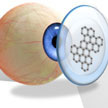 Several research projects are working on reinventing the contact lens as a smart electronic device that, for instance, works as a self-powered biosensor for various point-of-care monitoring and wireless biomedical sensing. n addition to sensors, researchers are devising numerous applications for smart contact lenses, ranging from drug delivery systems to protection from electromagnetic wave damage. An application closer to contact lenses' original function, graphene can change the focal length of a polymeric soft contact lens in order to adjust near- and farsightedness.
Several research projects are working on reinventing the contact lens as a smart electronic device that, for instance, works as a self-powered biosensor for various point-of-care monitoring and wireless biomedical sensing. n addition to sensors, researchers are devising numerous applications for smart contact lenses, ranging from drug delivery systems to protection from electromagnetic wave damage. An application closer to contact lenses' original function, graphene can change the focal length of a polymeric soft contact lens in order to adjust near- and farsightedness.
May 22nd, 2017
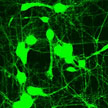 Growing neurons outside the brain but with predictable synaptic connectivity between other neurons could provide for an efficient platform for fundamental research and design of neuroprosthetics. Various neuromorphic engineering research efforts are underway to do this. A team now has built a Brain-on-a-chip where they demonstrated guided growth of neurons on semiconductor nanowire scaffolds. Providing an environment were scientists could study a less complex neuronal circuit as opposed to a fully functioning circuit in a living mammalian brain will open up a new experimental paradigm of understanding how the neurons are influenced by the mechanical properties of the brain as they grow and form circuits.
Growing neurons outside the brain but with predictable synaptic connectivity between other neurons could provide for an efficient platform for fundamental research and design of neuroprosthetics. Various neuromorphic engineering research efforts are underway to do this. A team now has built a Brain-on-a-chip where they demonstrated guided growth of neurons on semiconductor nanowire scaffolds. Providing an environment were scientists could study a less complex neuronal circuit as opposed to a fully functioning circuit in a living mammalian brain will open up a new experimental paradigm of understanding how the neurons are influenced by the mechanical properties of the brain as they grow and form circuits.
May 12th, 2017
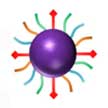 Immunotherapy has become an important part of treating some types of cancer. It uses certain parts of a person's immune system to fight the cancer. Usually this is done by administering immune system components, such as man-made immune system proteins. In recent years, nanotechnology has played an increasingly important role in pursuing efficient vaccine delivery in cancer immunotherapy. This article discusses vaccine delivery by synthetic nanoparticles or naturally derived nanoparticles for cancer immunotherapy.
Immunotherapy has become an important part of treating some types of cancer. It uses certain parts of a person's immune system to fight the cancer. Usually this is done by administering immune system components, such as man-made immune system proteins. In recent years, nanotechnology has played an increasingly important role in pursuing efficient vaccine delivery in cancer immunotherapy. This article discusses vaccine delivery by synthetic nanoparticles or naturally derived nanoparticles for cancer immunotherapy.
May 4th, 2017
 With their special structure and large surface area, MOFs open up new opportunities in drug delivery. The ability to exchange the metal centers and organic linkers even provide an extensive library of MOF materials. As a result, the integration of small guest molecules within the MOF pores, such as small molecule drugs and biomolecules, have shown promise for delivery applications to treat diseases. A recent review article discusses current proceedings on integrating diverse biomolecules within MOFs.
With their special structure and large surface area, MOFs open up new opportunities in drug delivery. The ability to exchange the metal centers and organic linkers even provide an extensive library of MOF materials. As a result, the integration of small guest molecules within the MOF pores, such as small molecule drugs and biomolecules, have shown promise for delivery applications to treat diseases. A recent review article discusses current proceedings on integrating diverse biomolecules within MOFs.
 Subscribe to our Nanotechnology Spotlight feed
Subscribe to our Nanotechnology Spotlight feed





